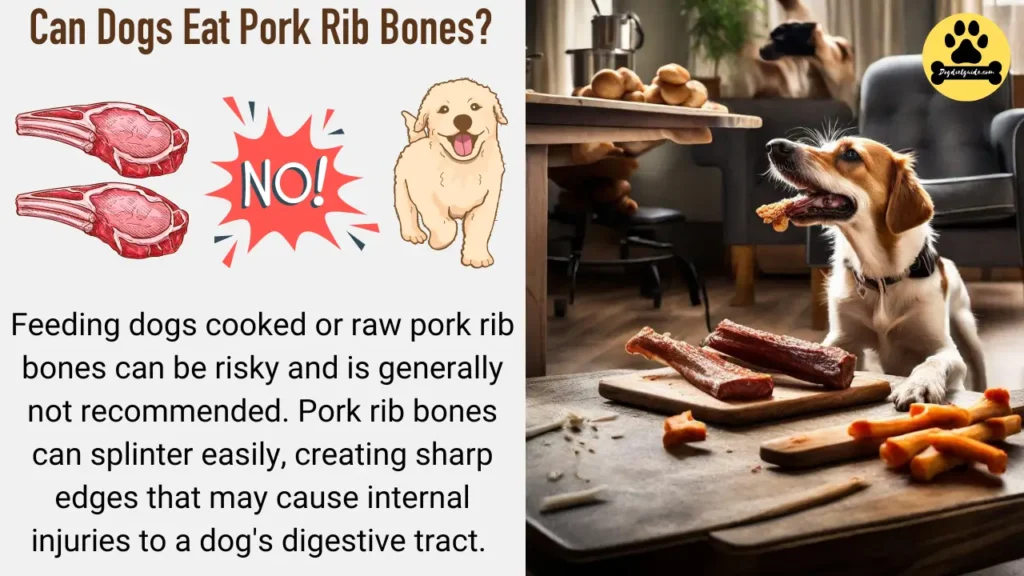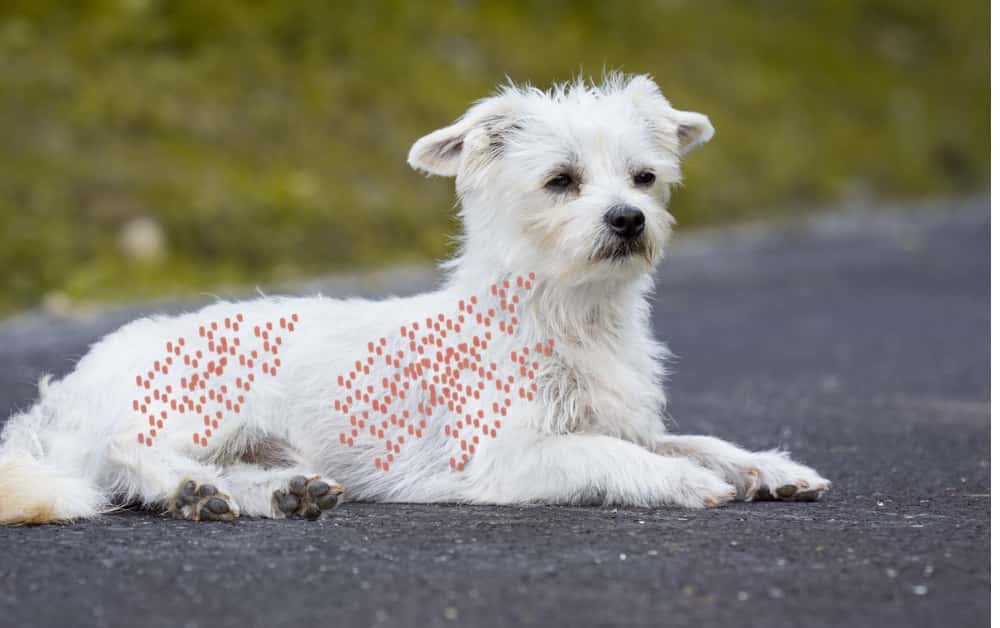In the ever-evolving landscape of pet nutrition, dog owners navigate myriad dietary choices for their furry companions. Among the many questions that arise, the issue of whether dogs can safely consume pork rib bones stands out as a hot topic of debate.
As canine enthusiasts strive to provide the best care for their four-legged friends, understanding certain foods’ potential risks and benefits becomes paramount. So, can dogs eat pork rib bones?
Pork Rib Bones For Dogs Overview
Caution: Feeding dogs cooked or raw pork rib bones can be risky and is generally not recommended. Pork rib bones can splinter easily, creating sharp edges that may cause internal injuries to a dog’s digestive tract. These sharp fragments can lead to punctures, tears, or blockages in the stomach or intestines.
The Controversy Surrounding Pork Rib Bones
Many pet owners find themselves torn between the joy of sharing a tasty treat with their dog and concerns about potential hazards.
While some advocate for the benefits, others warn against the dangers of canines consuming pork rib bones.
Can Dogs Eat Pork Rib Bones?
No, dogs should not be given pork rib bones.
While there is nothing inherently toxic or poisonous in pork bones for canines, feeding dogs pork rib bones poses several risks, making it generally unsafe. Pork rib bones tend to splinter easily, forming sharp edges that can cause internal injuries to a dog’s digestive tract. These sharp fragments may lead to punctures, tears, or blockages in the stomach or intestines.
Pork rib bones can present a choking hazard if a dog attempts to swallow large or small pieces of the bone. The digestive issues associated with bones, such as constipation or intestinal blockages, further contribute to the potential risks.
Risks of Pork Rib Bones for Dogs
-
Splintering: Pork rib bones easily splinter, posing a risk of sharp fragments causing internal injuries in a dog’s digestive tract.
-
Choking Hazard: Large or small pieces of pork rib bones can be a choking hazard if swallowed whole or if they break into smaller fragments during chewing.
-
Digestive Issues: Ingesting pork rib bones may lead to digestive problems, including constipation or intestinal blockages, if the bones are not adequately broken down.
-
Dental Damage: Chewing on hard bones like pork rib bones can potentially cause dental issues, such as broken teeth or damage to the gums.
-
Bacterial Contamination: Raw or undercooked pork can carry harmful bacteria like Salmonella or E. coli, posing a risk to the dog and its human caregivers.
-
Pancreatitis Risk: Fatty portions in pork rib bones may contribute to pancreatitis, a serious inflammation of the pancreas in dogs.
-
Obstruction Risk: Bone fragments may obstruct the digestive tract, leading to discomfort or more severe complications.

Related Post: Can Dogs Eat Rice Noodles?
My Dog Ate A Pork Bone: What Should I Do?
If your dog has eaten a pork bone, taking specific steps is essential to ensure their safety. Here’s what you should do:
-
Monitor Your Dog: Keep a close eye on your dog for signs of distress, discomfort, or unusual behavior. Look for symptoms such as vomiting, diarrhea, lethargy, abdominal pain, or difficulty passing stools.
-
Do Not Induce Vomiting: Unlike some other substances, inducing vomiting after a dog has ingested a bone is generally not recommended. Bones can splinter during vomiting, potentially causing additional harm.
-
Contact Your Veterinarian: Reach out to your veterinarian as soon as possible to discuss the situation. Provide them with information about your dog’s size, the type of bone ingested, and any observed symptoms. Your vet can give you specific advice based on your dog’s circumstances.
-
X-rays and Examination: In some cases, your veterinarian may recommend an X-ray to assess whether the bone has caused any internal damage or if there’s a risk of obstruction. Physical examination may also be necessary.
-
Dietary Changes: Your vet may suggest feeding your dog a special diet or providing additional fiber to help the bone pass through the digestive system more safely. Always follow your vet’s recommendations regarding your dog’s diet.
-
Surgical Intervention: In severe cases, surgery may be necessary to remove bone fragments or address complications. This is typically reserved for situations with a significant risk to your dog’s health.
My Dog Ate A Pork Bone And Is Throwing Up: Why?
If your dog has consumed a pork bone and is experiencing vomiting, it is crucial to recognize the seriousness of the situation and seek prompt veterinary attention.
Vomiting in this context may be attributed to various factors, including gastrointestinal irritation caused by the sharp edges of bone fragments, potential blockage or obstruction in the digestive system, the triggering of pancreatitis due to the fatty content in pork bones, or bacterial contamination if the bone carries harmful bacteria like Salmonella or E. coli.

Related Post: Is Freshpet Dog Food Good?
FAQs
Can small dogs eat pork rib bones?
Small dogs should not eat pork rib bones as they pose a choking hazard and may splinter, causing digestive issues or obstructions. It’s safer to provide them with boneless, cooked pork.
Can dogs eat pork back rib bones?
Regardless of size, dogs should not be given pork back rib bones. These bones are prone to splintering, leading to severe injuries or blockages in the digestive tract.
Can dogs eat raw pork rib bones?
Raw pork bones are not recommended for dogs. Raw bones can carry harmful bacteria like Salmonella or E. coli, posing health risks to the dog and its owner.
Can dogs eat cooked pork spare rib bones?
Cooked pork spare rib bones are also unsafe for dogs. Cooking makes bones brittle and prone to splintering, posing a significant risk of injury or obstruction in the dog’s digestive system. It’s best to offer dogs boneless, cooked pork as a safer alternative.
Final Thoughts: Can Dogs Eat Pork Rib Bones?
In conclusion, the decision to feed your dog pork rib bones involves careful consideration of the potential benefits and risks. By understanding your dog’s needs, monitoring their reactions, and following best practices, you can make an informed choice that contributes positively to their well-being.
Remember, while sharing treats with your furry friend is a joyful part of pet ownership, their health and safety should always be the top priorities.




![Can Dogs Eat Blood? 7 Side Effects [Expert Opinion]](https://petskor.com/wp-content/uploads/2022/04/Webp.net-resizeimage-12.jpg)
